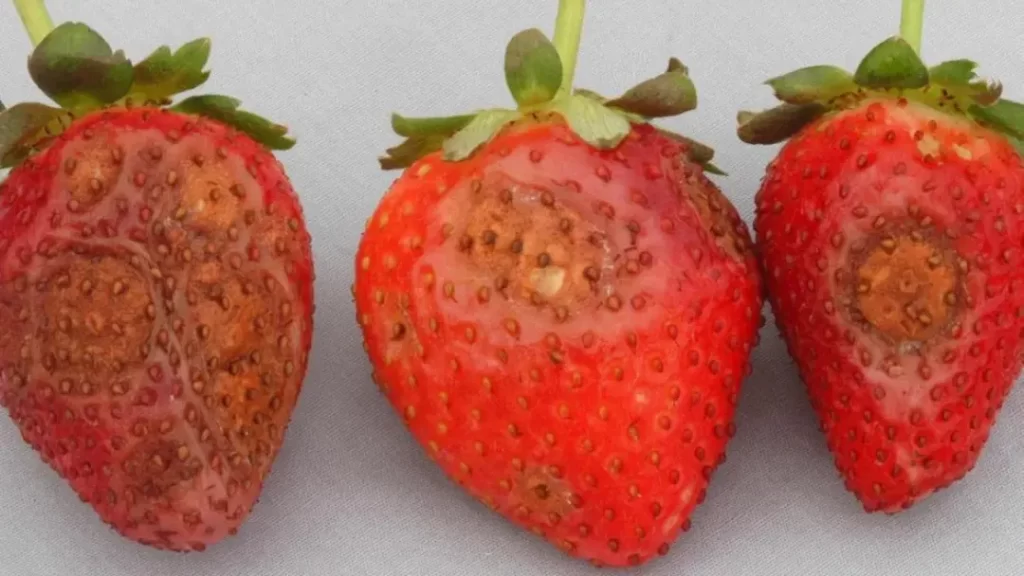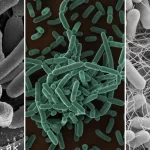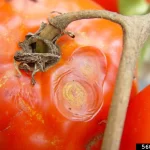Colletotrichum acutatum
Introduction
Colletotrichum acutatum is a fungal pathogen that causes anthracnose in strawberries [1]. Anthracnose describes several fungal diseases affecting various plants, from fruits to grass to trees [2,3]. Colletotrichum acutatum and fellow relatives, Colletotrichum fragariae and Colletotrichum gloeosporioides, can lead to substantial crop losses and economic impact for growers [4,5]. Even though soil-grown strawberries are at the highest risk for anthracnose, indoor farms and nurseries are also vulnerable. There is no way to guarantee that the plants they cultivate, and the materials they use, are entirely free of the pathogen [6]. Therefore, effectively screening this pathogen is essential for maintaining healthy and productive greenhouse environments.
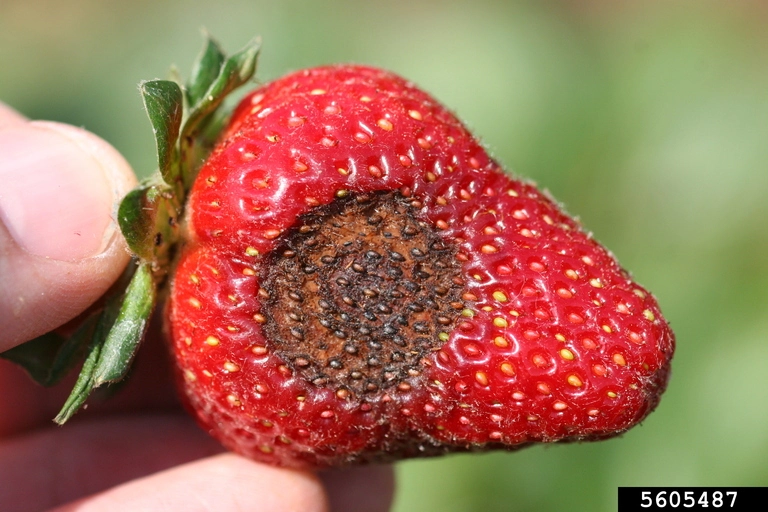
Table 1: Hosts of Colletotrichum acutatum and Susceptibility
|
Host Plant |
Susceptibility |
|
Strawberry |
High |
|
Raspberry |
Moderate |
|
Blackberry |
Moderate |
|
Blueberry |
Low |
|
Currant |
Low |
We provide great overviews of many agricultural microorganisms. Subscribe to stay updated!
Symptoms
The symptoms of Colletotrichum acutatum infection are variable, depending on the host plant and stage of infection. For strawberries common symptoms include [2–4,7]:
- leaf spots
- necrosis
- fruit rot
- crown rot
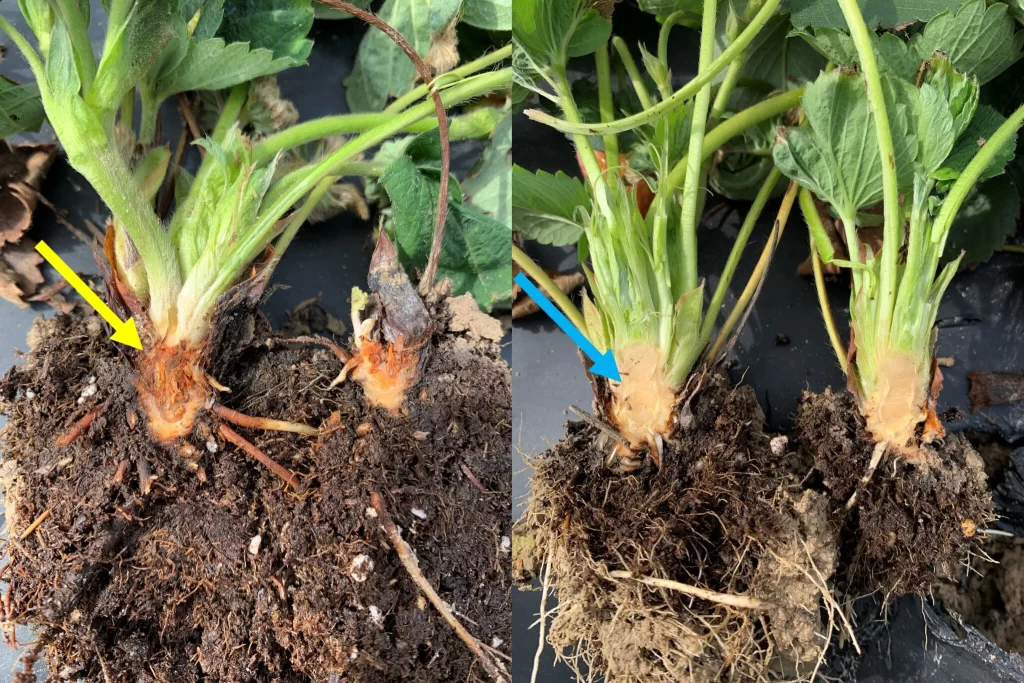
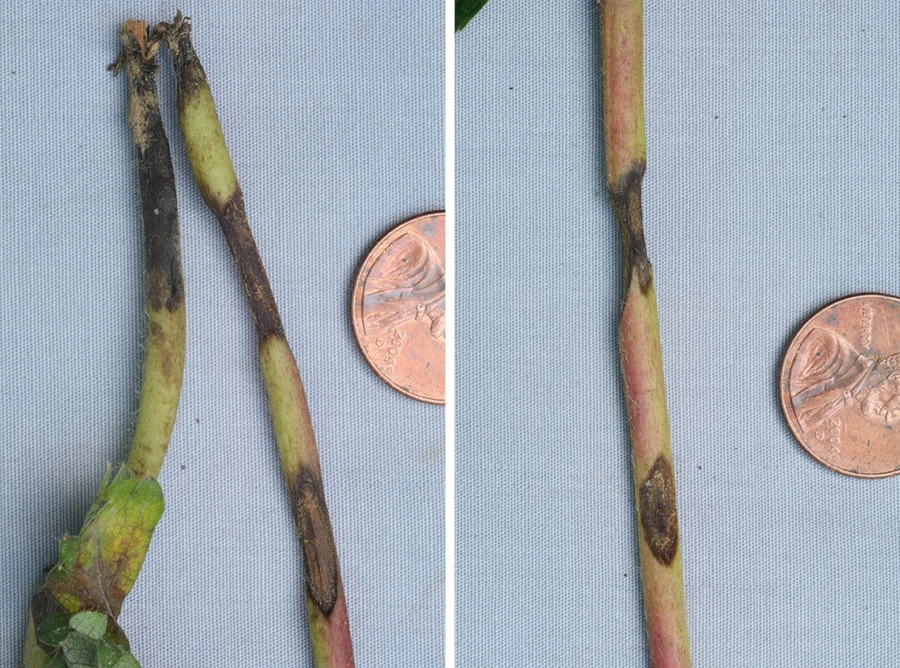
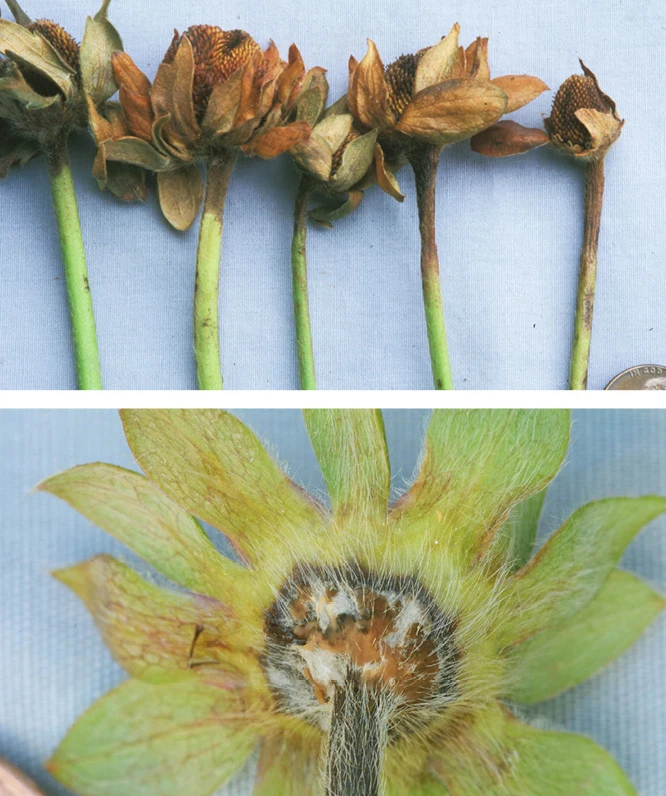
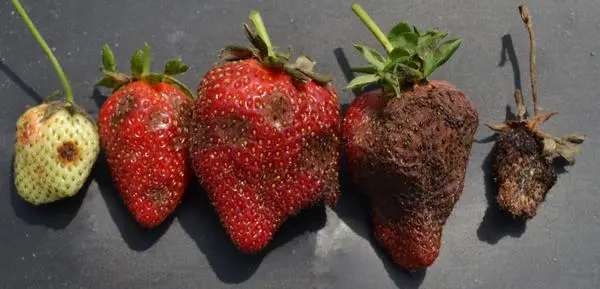
Infected leaves may develop irregularly shaped spots with tan, brown, or black borders. As the infection progresses, these spots may coalesce, leading to extensive leaf necrosis. Fruit rot is characterized by small, water-soaked lesions that expand rapidly, resulting in a soft, sunken, and discoloured appearance. In severe cases, the entire fruit may be covered with pink to salmon-coloured mass of spores. Crown rot symptoms include dark, sunken lesions on the plant crown, leading to plant collapse and death [7,8].
Life Cycle and Infection Stages
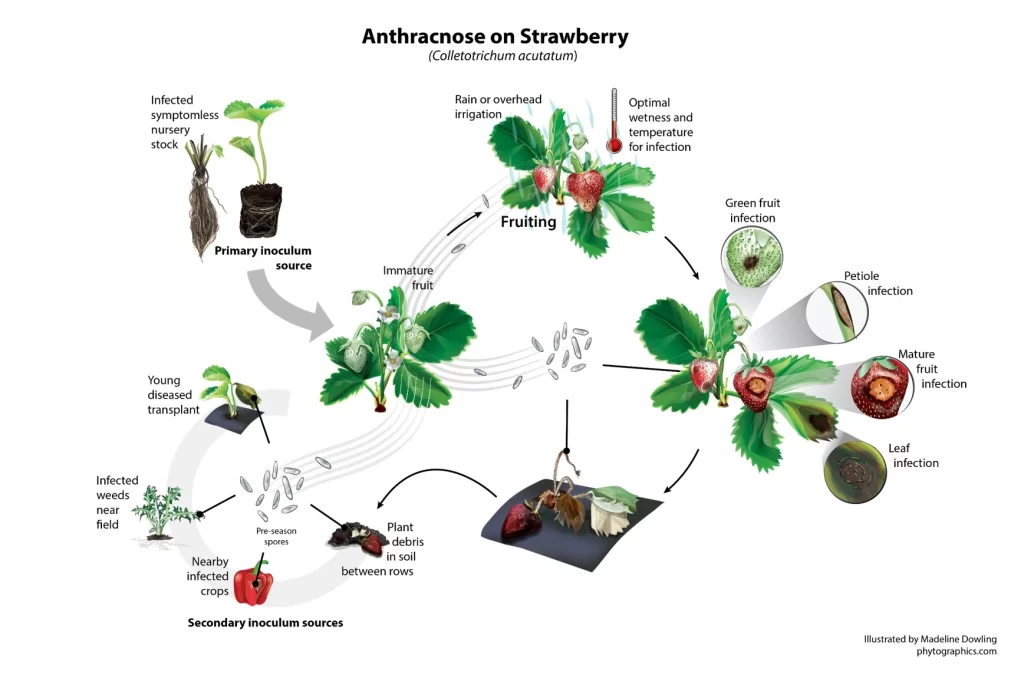
Colletotrichum acutatum reproduces both sexually and asexually. The sexual stage involves the production of ascospores within fruiting bodies called perithecia. In contrast, the asexual stage consists of the production of conidia, which are dispersed by wind, water, or mechanical means. The pathogen can overwinter in infected plant debris or soil, allowing it to persist in greenhouse environments [2,3,7,8].
Infection occurs when spores land on susceptible plant tissue and germinate, producing germ tubes that penetrate the host’s epidermis. Once inside, the fungus colonizes the tissue, leading to symptom development. The fungus can also spread from infected to healthy plants through direct contact or via contaminated tools, equipment, and workers [7,8].
Growth Conditions for Colletotrichum actuatum
Colletotrichum acutatum thrives in warm, humid conditions. High humidity and temperatures between 68°F to 82°F (20°C to 28°C) are ideal for spore germination and disease development. Prolonged periods of leaf wetness also favour infection. Therefore, greenhouse growers should be vigilant in monitoring and controlling the growth environment to minimize disease risk [4].
Prevention and Control Methods
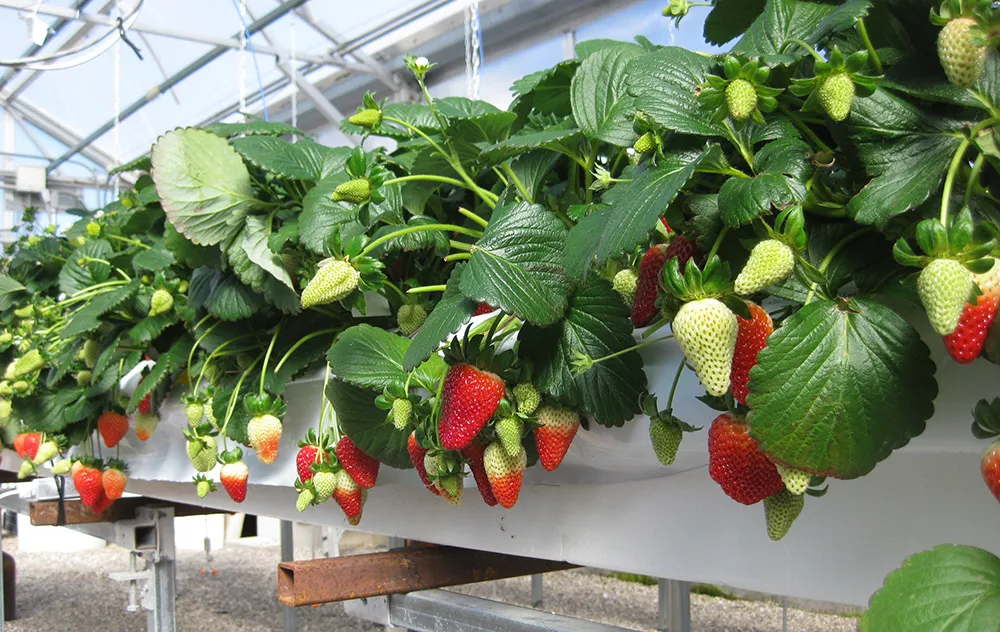
- Practice good sanitation: Remove and destroy infected plant material to prevent the pathogen’s spread. Regularly clean and disinfect tools, equipment, and surfaces to minimize contamination.
- Implement proper irrigation practices: Use drip or micro-irrigation systems to reduce leaf wetness. Try to avoid overhead irrigation, as it can create conditions that promote fungal growth. Have proper airflow if using overhead irrigation.
- Monitor and control environmental conditions: Maintain appropriate temperature and humidity levels and ensure adequate air circulation within the greenhouse to minimize conditions favourable for fungal growth.
- Gutter system: Having gutters help keep the strawberry fruits and leaves off the ground
- Implement crop rotation: If feasible, rotate crops within the greenhouse to disrupt the pathogen’s life cycle and reduce the buildup of inoculum in the soil.
- Biological control: Explore using biological control agents, such as beneficial bacteria or fungi, that can suppress the growth and spread of Colletotrichum acutatum.
Conclussion
Colletotrichum acutatum poses a significant risk for all strawberry growers, indoor or outdoor. By understanding this pathogen’s symptoms, life cycle, and growth conditions, growers can implement effective prevention and control measures. Combining proper sanitation and environmental monitoring strategies, greenhouse growers can successfully manage Colletotrichum acutatum and maintain a healthy, productive crop season.
Disclaimer
The information we present in Pathogen Profile is based on collating published peer-reviewed scientific literature and sources we think are reliable. This is by no means an exhaustive review of pathogens. Pathogen Profile gives a small glimpse of what is known about pathogens. We encourage growers to do more research on the pathogens concerning their crops and hydroponic systems. We are not plant pathologists; thus, the information presented in the Pathogen Profile should not be used as professional advice to treat pathogens or operate your system.
References
[1] Han, Y. C., Zeng, X. G., Xiang, F. Y., Ren, L., Chen, F. Y., & Gu, Y. C. (2016). Distribution and characteristics of colletotrichum spp. Associated with anthracnose of strawberry in Hubei, China. Plant Disease, 100(5), 996–1006. https://doi.org/10.1094/PDIS-09-15-1016-RE
[2] Hudelson, B. (2012). Anthracnose. Wisconsin Horticulture Extension. https://hort.extension.wisc.edu/articles/anthracnose/
[3] Downer, A. J., Swain, S., & Crump, A. (n.d.). Anthracnose. UC IPM. https://ipm.ucanr.edu/PMG/PESTNOTES/pn7420.html
[4] Madeiras, A. (2016). Strawberry IPM- Anthracnose. UMass Extension Fruit Program. https://ag.umass.edu/fruit/fact-sheets/strawberry-ipm-anthracnose
[5] Smith, B. J. (2008). Epidemiology and Pathology of Strawberry Anthracnose: A North American Perspective. HortScience, 43(1), 69–73. https://doi.org/10.21273/HORTSCI.43.1.69
[6] Beckerman, J. L. (2022). Managing Anthracnose in Strawberry. Facts for Fancy Fruit Newsletter; Purdue University. https://fff.hort.purdue.edu/article/managing-anthracnose-in-strawberry/
[7] Bolda, M., Daugovish, O., & Koike, S. (2017). Anthracnose of Strawberry. In California Strawberry Commission. California Strawberry Commission. https://ucanr.edu/blogs/strawberries_caneberries/blogfiles/47929.pdf
[8] Louws, F., Ridge, G., Harrison, J., & Cline, B. (2019). Anthracnose Fruit Rot of Strawberry. NC State Extension Publications. https://content.ces.ncsu.edu/anthracnose-fruit-rot-of-strawberry
![]()
David Santos is an Agritech Advisor at Healthy Hydroponics InnoTech


